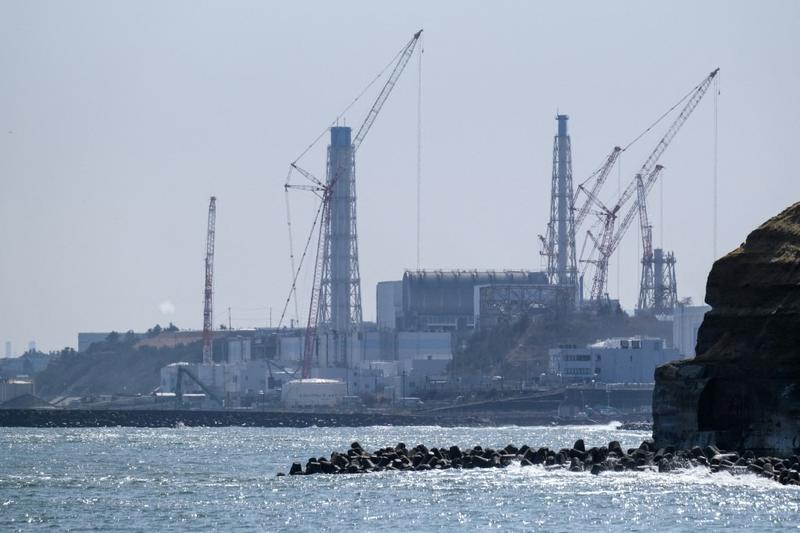 The Tokyo Electric Power Company Holdings (TEPCO) Fukushima Daiichi nuclear power plant is seen from the coast of Futaba town in Fukushima prefecture on March 10, 2021, on the eve of the 10th anniversary of the 9.0-magnitude earthquake which triggered a tsunami and nuclear disaster which killed over 18,000 people. (KAZUHIRO NOGI / AFP)
The Tokyo Electric Power Company Holdings (TEPCO) Fukushima Daiichi nuclear power plant is seen from the coast of Futaba town in Fukushima prefecture on March 10, 2021, on the eve of the 10th anniversary of the 9.0-magnitude earthquake which triggered a tsunami and nuclear disaster which killed over 18,000 people. (KAZUHIRO NOGI / AFP)
TOKYO - Japanese Prime Minister Yoshihide Suga said on Wednesday that his government will soon decide on whether to discharge treated radioactive water building up at the disaster-stricken nuclear complex in Fukushima Prefecture into the sea despite strong opposition by fisheries industries.
The Fukushima Daiichi nuclear plant has been generating massive amount of radiation-tainted water since the accident happened as it needs water to cool the reactors
Suga held a meeting with Hiroshi Kishi, head of the national federation of fisheries cooperatives known as JF Zengyoren, over the issue at his office in Tokyo earlier in the day.
"I want to make a decision in a few days on how to dispose of treated radioactive water," Suga told reporters after the meeting.
For his part, Kishi reiterated his organization's opposition to the idea of dumping the water into the sea, "there is no change in the least in our position."
The Fukushima Daiichi nuclear plant has been generating massive amount of radiation-tainted water since the accident happened as it needs water to cool the reactors.
ALSO READ: Japan mourns victims of 2011 quake, Fukushima nuke disaster
The water has been treated using an advanced liquid processing system, or ALPS, to remove most contaminants. However, things like radioactive tritium are hard to filter out.
The plant has been struggling to store the contaminated water in tanks at the plant, and space is expected to run out by the fall of this year.
Japan had considered evaporating or storing underground the tritium-laced water from the plant as an alternative. However, from the perspective of cost and technical feasibility, the Japanese government prefers to dilute the contaminated water and discharge it into the sea.
The plan is not only facing strong opposition from the Japanese fish industry and the public, but also doubts from neighboring countries.


